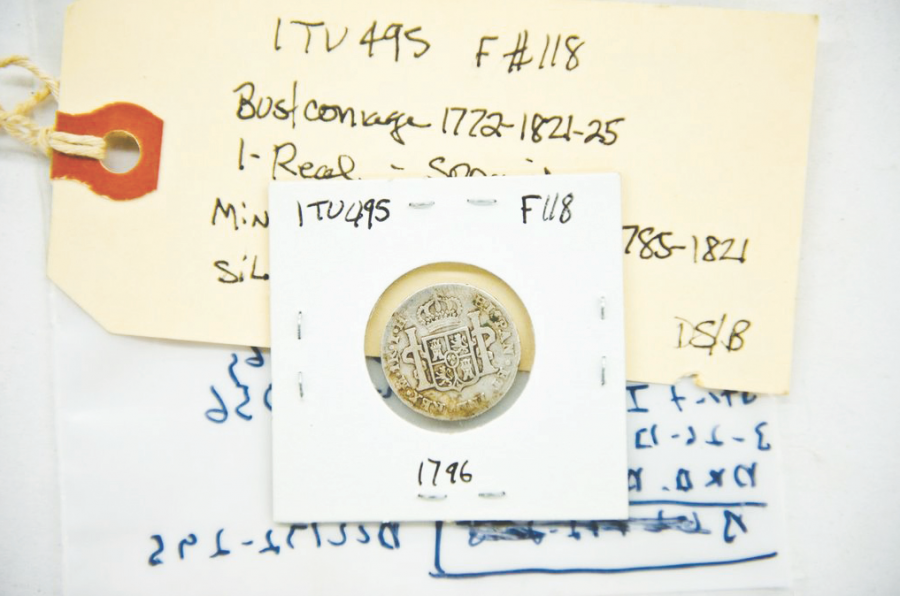Archaeologists from The University of Alabama have uncovered a collection of artifacts that provide a glimpse into what life was like in Tuscaloosa over 180 years ago. Through items such as bottles, pipes and Spanish coins, they hope to learn more about the area’s past.
The University’s Office of Archaeological Research has spent the past two months analyzing artifacts collected from the site at the corner of Greensboro Avenue and University Boulevard as a result of a contract between the University and the city of Tuscaloosa to perform an archaeological investigation per federal guidelines before allowing construction of a new Embassy Suites Hotel on the plot.
“This dig goes from the early stages all the way to the present. It tells us how people developed and the city developed and establishes the connection between both the South and the world,” Brandon Thompson, culture resources specialist for OAR and project director of the dig, said.
The dig began in January with Thompson and his team researching the site, formerly home to the Bank of the State, before stripping the remaining parking lot in February.
“The mood was very exciting since we don’t get to do a lot of large excavations,” he said. “We knew there was a lot of history to be told with this dig.”
The history of the site dates back to 1816, when Revolutionary War veteran John Click built a cabin on the site. The plot of land has undergone several changes between then and now. Later, the original cabin became a shop owned by famed furniture maker Augustin Lynch, who not only created furniture for the City Hall in Tuscaloosa and early UA buildings, but also ivory billiard balls, evidenced by ivory and various tools found in the excavation.
Some of the most notable artifacts come from the era when the Bank of the State occupied the property, including a few decorative pieces and Spanish coins. Minted in Brazil, Guatemala and Mexico City, people used foreign coins alongside domestically minted coins due to the lack of U.S. mints during the early 1800s. The coins were found closer to the remains of the original cabin, which gives archaeologists the impression that they were used in the early years of trading.
Other uses of the property included the Tuscaloosa Ice Company, shanties and other dwellings, and the Drish building, originally a warehouse then a Civil War prison facility.
For Thompson, the most fascinating artifact to be excavated was a toilet from the Civil War era.
“We have a lot of stuff, but the privy is the most fascinating,” he added. “Just from this one discovery, we got to see what they were eating, what kinds of diseases they had and what they were making.”
While the field portion of the excavation is complete, analysts must continue to sort through and compile the various materials found at the site. Although most of the artifacts found will be placed into storage at the University, hotel developers are intending to place some of the major pieces on display.
“It’s exciting to see how Tuscaloosa has grown through the years and continues to do so,” Thompson said. “The city has a rich history.”







